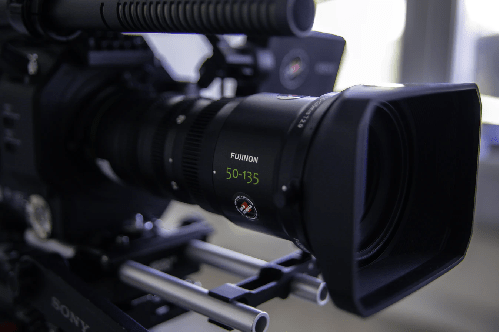Digital PR
Producing Digital PR Campaigns & Outreach Assets
Explore Guide
As a digital PR, aside from outreaching to journalists, a huge portion of your time is spent managing and working through the production of upcoming campaigns.
Some teams work in different ways, with researchers being involved throughout and others do the research 100% themselves. Design and development is key in ensuring the assets created engage the audience – allowing the story (and hook) to come through in a click of the fingers.
However you work and whatever additional resources you have available to you, this part of the digital PR process is where (cliche incoming) *the magic happens* (…sorry).
Production is the part of the process that can make your life a breeze or a nightmare when it comes to outreach. Getting it right deserves a lot of time and we’ll walk you through what production typically looks like on a campaign and when your spidey-senses need to be tingling.
Methodology
Before you start researching your data or information to power your creative assets, you need to consider the methodology that underpins the validity of what you’ll be outreaching. Journalists want to know the stories they feature are strong and their users aren’t going to destroy the piece in one line of the comments section (the internet is a fickle place).
Your job is to ensure your information is as water-tight as feasibly possible. This upholds the reputation of your brand and also the reputation of any journalist who features your story.
Often when outreaching to a journalist at a top tier publication, like the BBC or NYTimes, the journalist will want to fully understand not only what you’ve uncovered but how. Even with the best headline in the world, the ‘how’ can make or break your feature here and it’s imperative you get it right from the get-go.
A good methodology must be logical and have all the viable options covered. To use a piece from our own library of creative campaigns here, our piece on ‘The Brink of Homelessness’ looks at how close the average American is from being homeless if they lost their source of income. To do that, you need to consider the legitimate choices someone in the US would make if this was a reality they were facing. Therefore, our methodology was centred on our own ‘homelessness algorithm’ that took into account people’s savings and debts, retirement funds, the value of their possessions, their typical cash holdings and the benefits they would (typically) be offered. We then had to work out the penalties for accessing retirement funds early, how much cash someone would typically get for possessions when selling quickly, and factor in the costs of living in different parts of the country.
You can start to see how the methodology for a campaign can become a complex part of the process, but when aiming to have your work featured by respected journalists, the details can make all the difference.
Pro-tip: Often sourcing an expert in the field to provide comments on your insights offer not only additional props to your story but they can also be used by journalists when writing up their feature.
Research
You’ve completed ideation at this point, worked out how you’re going to uncover your story and now is the time to start gathering the information you need to power your campaign. This will often be entirely dictated by the idea you’re moving forward with but there are typically two main sources of information that you’re going to be headed in:
Primary
Primary research is information you are sourcing yourself. Campaigns that head in this direction are usually tackling a subject or hoping to present information that others don’t have. Surveys are a great source of primary data, but you can also run experiments such as testing a piece of AI software and presenting the results, or dropping different model phones from various heights to see which breaks first.
This is all primary research and it can have a powerful effect on your campaigns results. The main benefit primary research has is that you’re not revisiting a data-point or headline others have been able to share before. This gives you ‘first mover’ advantage and the snowball effect can be in full flow from here.
Secondly, a campaign that has been entirely developed and researched in-house can put the brand at the heart of the piece. Being the proprietary owners and conductors of the research, when journalists are writing about your findings it’s natural for them to mention the company behind it. This is something that can make your life much easier during outreach.
Secondary
That’s not to say that secondary research methods can’t be just as effective.
Campaigns that utilise existing data can breathe new life into a topic that has already been tackled, but perhaps not in the right way. For example, governments and companies all around the world are releasing data on a regular basis, which can be analysed and visualised in new ways to provide insights and engaging takeaway the original data sources failed to do.
Using secondary data sources can also provide a lot of weight to your methodology, and this is the great advantage this method of research has. If you’re using reputable data sources, your brand and your own experiments methodology are no longer in question. Instead, you’re standing on the shoulders of other organisations whose reputations have already done the hard work. This strengthens the information you’re going to be outreaching and increases the likelihood a journalist is going to use it.
Design & Development
With your research now complete, you’ll be working with either a designer, copywriter, developer or all three on creating the visual assets you need.
In order to complete this part of the process, there are some key assets and questions that you’ll be asked by the team, which you’ll need to know and brief them on. These will have a massive impact on what and how your campaign is going to be designed and developed, so ensuring you have the correct information here will ensure you stay on time and within budget.
Brand guidelines
Designers and developers will need a steer on things like which font(s) they should use, which colour palette they can work with, if there is an existing animation style, etc. Often, larger companies will already have this, but if not, the website can become the go-to for most of these important questions.
Uploading
For the most part, we would also recommend uploading your asset to the website first, in order to offer journalists a ‘source’ to attribute. How you are going to do this may seem like a small part of the process at first, but it can become increasingly complex and have a huge effect on what the campaign becomes.
Here, you’ll need to confirm with the team who set the website up or the devs in charge, but you’ll want to confirm how a new asset should be uploaded to the site. Are there any limitations with the CMS you’re using, can you upload folders directly to the server, is there a set pixel width for images, how does compression work on the site, etc.
Browsers/Devices
Another consideration that is important for both designers and developers, but also for you and the impact different browsers and devices can have on your final asset.
Let’s consider a map for a second. You may be working on a colour-coded world map that highlights the different tourist seasons around the world, highlighting when countries and regions are in high or low season. Sounds great, but how easy would that be to use on a mobile? If journalists are going to be using your assets they will also be reviewing these considerations for their own reading experience.
Pro-tip: When having stats visualised, include the company’s logo somewhere on the visuals. This will help ensure that any journalists that take your imagery and utilise them in your article won’t fail to be promoting the brand at the same time – something that can be (unfortunately) missed.
Pre-Launch Checks
With your campaign now having taken shape and the designs or staging environment all raring to go, there are just a few pre-launch checks to make and keep in mind. Changing anything at this stage will likely involve a bit of stress and a designer sending you a meme or two, but the performance of the campaign is paramount, so, sorry guys – if they have to change, they have to change.
Shareability
Like the name suggests, how shareable is the asset you’ve created? I don’t just mean social bookmarking options here, but rather ensuring you’ve accounted for different eventualities and versions, which journalists may have wanted but not have the time to request.
When it comes to images such as photographs, illustrations, etc. these can be fairly straight-forward, but consider having a chopped up version of key stats, or high and low resolution imagery you can ZIP up and send over in your initial outreach email.
Shareability is about ensuring journalists and writers have the asset they can use. Unfortunately, the usable asset isn’t the same for everyone and different journalists are working with their own CMS limitations at times and might not be able to simply use a line of code to embed an asset.
Whilst you still have your design and dev team involved, ensure you have the versions you need and this doesn’t become a last minute ‘must-have’ which then has to go through new sign-off stages at the last second.
5-Second Rule
Before you’re ready to call it a day with production and publish, a good ‘acid test’ is sending it to your colleagues or friends and asking ‘do you get what this is about within 5 seconds?’
The 5-second-rule is all about engagement. Some journalists receive over 200 emails like the one you’ll be sending a day. Depending on who they are and what they write about, they likely won’t have the time to spend very long looking at your clever data visualisation to work out the comparison you’re making or what the crux of the hook is.
If the heart of the story isn’t coming through almost immediately, don’t have any reservations about attempting to reframe your asset.
Exclusivity
Before you go live and release your asset upon the world, it’s worth considering if some journalists would be interested in your campaign as an exclusive. There are two key benefits to this:
- Emailing a short list of key journalists at target publications allows you to gauge interest in the campaign and potentially land a key placement before you’ve even really begun outreach.
- Gain feedback on your campaign, which you can adjust before you go live and have to back-track to amend.
Pro-tip: Keep your email list short here. Don’t email out to too many different journalists as you could risk damaging your relationship with them further down the road. Digital PR is a long-game, not just one piece.
Second and last cliche incoming: now, it’s showtime!

